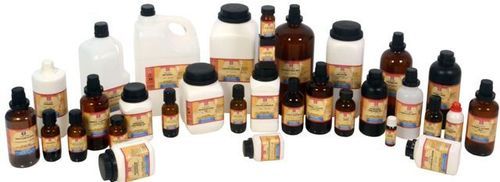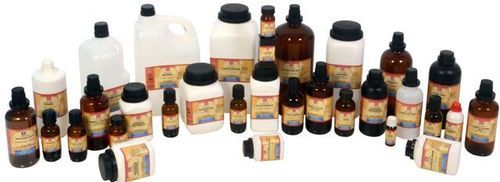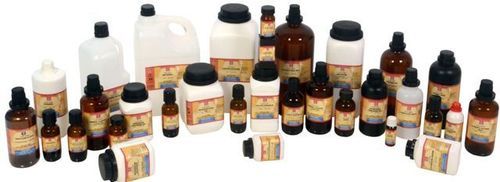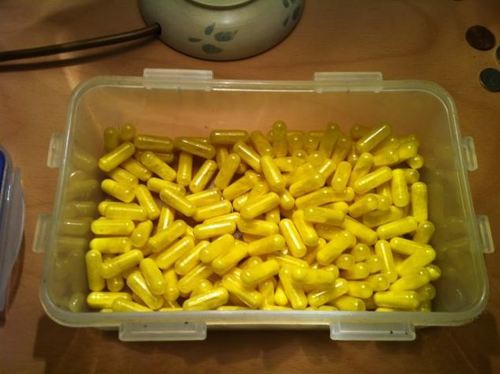Nickel(II) nitrate hexahydrate
Product Details:
X
Product Description
LC4248 Nickel(II) nitrate hexahydrate for analysis EMSURE
| Order number | Packaging | Quantity | Price |
| AC31248 | Plastic bottle | 100 g | 21.38 |
| AC31248 | Plastic bottle | 250 g | 34.65 |
| AC31248 | Plastic bottle | 1 kg | 84.6 |
| Product information | |
| Hill Formula | N2NiO6 * 6 H2O |
| Chemical formula | Ni(NO3)2 * 6 H2O |
| HS Code | 2834 29 20 |
| EC number | 236-068-5 |
| Molar mass | 290.81 g/mol |
| CAS number | 13478-00-7 |
| Chemical and physical data | |
| Solubility | 940 g/l (20 C) |
| Melting point | 56.7 C |
| Molar mass | 290.81 g/mol |
| Density | 2.05 g/cm3 (20 C) |
| Bulk density | 800 kg/m3 |
| pH value | 5 (50 g/l, H2O, 20 C) |
| Boiling point | 136.7 C |
| Safety information according to GHS | |
| Hazard Statement(s) | H272: May intensify fire; oxidiser. H350i: May cause cancer by inhalation. H341: Suspected of causing genetic defects. H360D: May damage the unborn child. H372: Causes damage to organs through prolonged or repeated exposure. H332: Harmful if inhaled. H302: Harmful if swallowed. H318: Causes serious eye damage. H315: Causes skin irritation. H317: May cause an allergic skin reaction. H410: Very toxic to aquatic life with long lasting effects. |
| Precautionary Statement(s) | P201: Obtain special instructions before use. P281: Use personal protective equipment as required. P302 + P352: IF ON SKIN: Wash with plenty of soap and water. P304 + P341: IF INHALED: If breathing is difficult, remove victim to fresh air and keep at rest in a position comfortable for breathing. P305 + P351 + P338: IF IN EYES: Rinse cautiously with water for several minutes. Remove contact lenses, if present and easy to do. Continue rinsing. P308 + P313: IF exposed or concerned: Get medical advice/attention. |
| Signal Word | Danger |
| Hazard Pictogram(s) |      |
| RTECS | QR7300000 |
| Storage class | Oxidizing agents (TRG 515 Group 2+3) |
| WGK | WGK 3 highly water endangering |
| Disposal | 22 Inorganic peroxides and oxidants as well as bromine and iodine should be rendered harmless by reduction with acidic sodium thiosulfate solution (Cat. No. 106513); container D or E. Slightly soluble oxidants should be collected separately in container E or I. |
| Safety information | |
| R Phrase | R 49-61- 8-20/22-38-41-42/43-48/23-50/53-68 May cause cancer by inhalation.May cause harm to the unborn child.Contact with combustible material may cause fire.Also harmful by inhalation and if swallowed.Irritating to skin.Risk of serious damage to eyes.May cause sensitization by inhalation and skin contact.Also toxic: danger of serious damage to health by prolonged exposure through inhalation.Very toxic to aquatic organisms, may cause long-term adverse effects in the aquatic environment.Possible risk of irreversible effects. |
| S Phrase | S 53-17-22-26-36/37/39-45-61 Avoid exposure - obtain special instructions before use.Keep away from combustible material.Do not breathe dust.In case of contact with eyes, rinse immediately with plenty of water and seek medical advice.Wear suitable protective clothing, gloves and eye/face protection.In case of accident or if you feel unwell, seek medical advice immediately (show the label where possible).Avoid release to the environment. Refer to special instructions/ Safety data sheets. |
| Categoriesofdanger | carcinogenic, toxic for reproduction, oxidizing, irritant, sensitizing, toxic, dangerous for the environment, mutagenic |
| Hazard Symbol |
|
| Transport information | |
| Declaration (transport by sea) IMDG-Code | UN 2725 NICKEL NITRATE, 5.1, III |
| Declaration (transport by air) IATA-DGR | UN 2725 NICKEL NITRATE, 5.1, III |
| Toxicological data | |
| LD 50 oral | LD50 rat 1620 mg/kg |
| Specifications | |
| Assay (complexometric) | 99.0 % |
| Chloride (Cl) | 0.001 % |
| Sulphate (SO4) | 0.005 % |
| Ca (Calcium) | 0.005 % |
| Co (Cobalt) | 0.005 % |
| Cu (Copper) | 0.001 % |
| Fe (Iron) | 0.001 % |
| Na (Sodium) | 0.005 % |
| NH4 (Ammonium) | 0.05 % |
| Pb (Lead) | 0.001 % |
| Zn (Zinc) | 0.001 % |
Tell us about your requirement

Price:
Quantity
Select Unit
- 50
- 100
- 200
- 250
- 500
- 1000+
Additional detail
Mobile number
Email
Other Products in 'Laboratory Chemicals' category
We are deals in Lab Chemicals.
"Only deals in retail accepting orders upto 500ml only".
"Only deals in retail accepting orders upto 500ml only".
 |
ALPHA CHEMIKA
All Rights Reserved.(Terms of Use) Developed and Managed by Infocom Network Private Limited. |
 English
English Spanish
Spanish French
French German
German Italian
Italian Chinese (Simplified)
Chinese (Simplified) Japanese
Japanese Korean
Korean Arabic
Arabic Portuguese
Portuguese



 Oxidising
Oxidising Toxic
Toxic Dangerous for the environment
Dangerous for the environment






